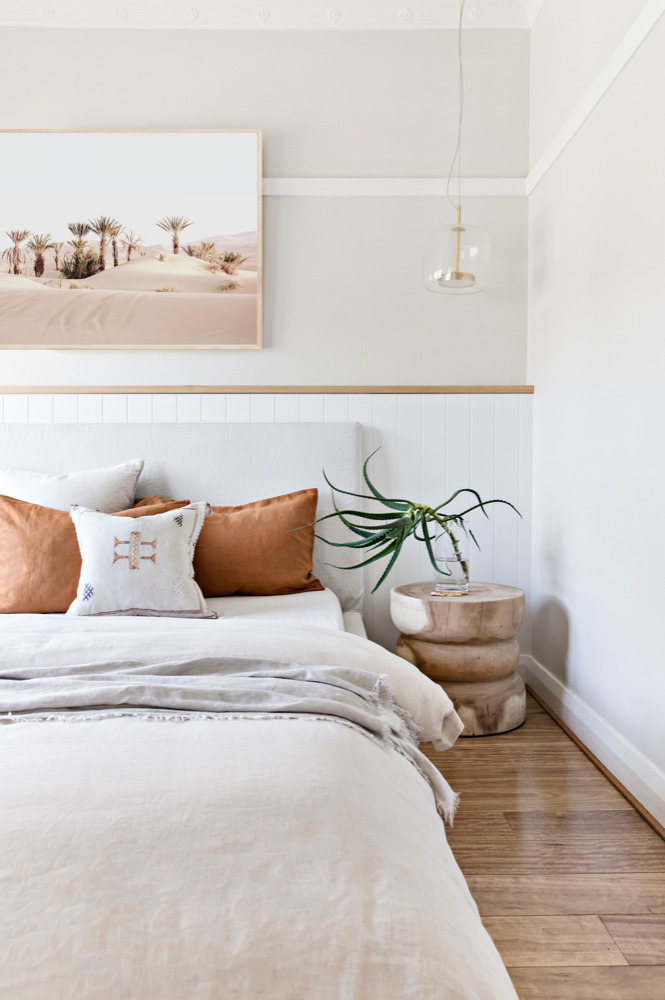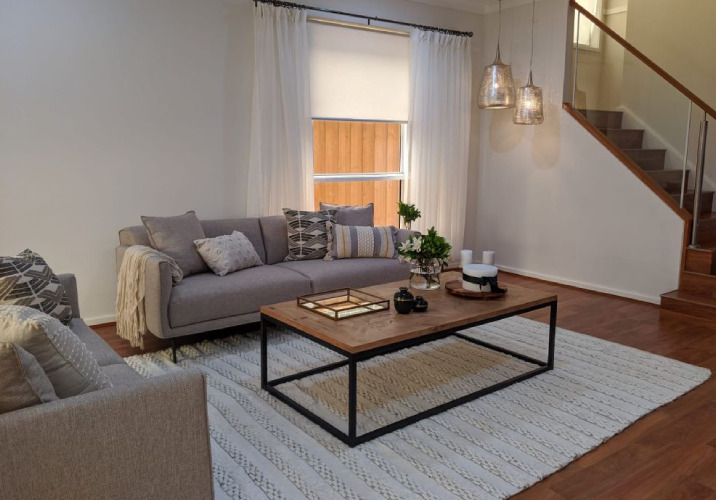Home decorating can be an exciting task to take head-on since you get to personalise your living space. But the excitement often gives way to the daunting task of choosing the right colours for your furniture and walls.
Navigating the world of colour can be overwhelming, but don’t worry — a colour consultant can help you select the right hues for your home. In this article, we’ll explore why recruiting paint colour consultants is not just a wise decision but a crucial step before painting your house.
What does a colour consultant do?
A colour consultant specialises in breathing new life into living spaces through colour. Armed with a keen eye for design and a deep understanding of colour psychology, they curate palettes that elevate the client’s living experience.
These professionals have degrees in interior design or similar fields, so they bring educated recommendations. Their work doesn’t just focus on matching paint colours but also shades, tones, and hues, making for a more holistic and personalised approach to design.
Their toolkit includes colour selection theory knowledge, an understanding of the latest trends, and intuitive flair. When consulting a specialist, their services generally range from in-home consultations to virtual guidance, giving the highest level of flexibility to meet your needs.
Common mistakes homeowners make when choosing paint colours

Ignoring natural light dynamics
Many homeowners fall into the trap of overlooking the impact of natural light when choosing their colour palettes for a room. For instance, pastel yellow may look pleasing, but its brightness might be too much once it’s hit by the sun during a specific time of day.
It’s crucial to consider how sunlight affects your chosen hues, so you’ll know whether to get curtains, blinds, or additional layers to temper the sunlight at specific times.
Going after trends
Riding the wave of what’s hot and trendy can be exciting, but it can eventually lead to dissatisfaction as time goes on.
Opting for the trendiest colour might seem like a great idea initially, but what’s in today could be outdated tomorrow. Your once-modern home may feel like a time capsule, which can merit costly repaints to keep up with the ever-evolving design landscape.
Neglecting your home’s overall style
Another pain point for most homeowners can be choosing colours and palettes that clash with the existing style of their homes.
Picture this: having a vintage-themed home with bold, modern colours or a modern space with dull shades or eclectic hues. Sounds like a nightmare, right? This jarring clash between your home’s inherent style and your chosen colour scheme can create a visual disconnect.
Underestimating undertones
Homeowners may inadvertently opt for colours or two-toned colour combinations with undertones that clash with flooring, furniture, or fixtures.
Consider the scenario where you’ve chosen a calming blue for your bedroom, only to discover its subtle green undertone clashes with the warm wood tones of your furniture. This oversight can turn a well-intentioned colour scheme into a mismatched palette.
Skipping sample testing
Sometimes, the excitement can get the better of you when you decide to skip the crucial step of sample testing.
Skipping sample testing goes beyond mere disappointment. The paint you loved in a small swatch may behave differently on larger surfaces, interacting in unexpected ways.
Without a test patch, you risk committing to a colour that clashes with your furniture, throws off the room’s balance, or doesn’t give the atmosphere you want for your space.
5 Benefits of hiring a paint colour consultant

They can offer you a personalised experience
One of the primary benefits of hiring a colour consultant is getting a personalised colour palette tailored to your unique style and preferences. These experts delve into the lifestyle and taste of your home, offering a colour scheme that goes beyond generic recommendations.
They give room-specific recommendations
Colour consultants recognise that every room plays a distinct role in your daily life. They ensure that the colour scheme looks good and aligns seamlessly with the intended atmosphere and purpose.
The result of considering these details is a recommendation that’s best suited for the room at hand.
You can avoid costly mistakes
Hiring a colour consultant nearly guarantees you an outcome that’s to your liking. Whether it’s selecting a shade that clashes with furniture or underestimating the impact of natural light, their expertise minimises the risk of expensive repaints and makes your initial investment in paint a well-informed one.
They coordinate their recommendations with exterior elements
Architectural style is another crucial factor colour consultants consider. They carefully assess the design elements of your home, from traditional Victorian details to sleek contemporary lines.
This evaluation ensures that the chosen colours enhance the architectural features, highlighting your home’s unique character.
They can offer post-project support
A colour consultant’s job doesn’t end after the room is done and the homeowner is satisfied. Some services can also offer post-project support, giving you valuable tips on preserving the chosen colour of the space and long-term maintenance, and might even assist with future renovations to keep your home’s aesthetic intact.
When you should consider hiring a colour consultant

Enlisting the help of a colour consultant becomes handy when a project or the homeowner’s uncertainty can benefit from professional guidance and ideas.
- When you’re working on a big project. Having an extensive or large-scale project that involves several rooms can be a headache. In this case, their expertise can streamline the decision-making process.
- Indecisiveness about colour choices. If you are drowning in a sea of paint swatches and unable to commit to different colour palettes, a consultant offers the advice, clarity, and confidence needed. They interpret your preferences, lifestyle, and existing elements to tailor recommendations.
- When you want to create a holistic and cohesive colour scheme. Paint colour consultants consider the flow of spaces, creating a seamless transition from one area to another. This is particularly valuable for homeowners who aim for a unified and aesthetically pleasing ambience but aren’t sure how to achieve it.
What to expect when working with a paint colour consultant
The process typically begins with an initial consultation, during which the consultant seeks to understand your vision, lifestyle, and preferences. This sets the foundation for a personalised approach that aligns with your unique taste and the specific requirements of your home.
They will offer insights into different colour concepts, trends, and combinations so homeowners are able to make sound decisions when painting their homes. Colour consultants will also navigate through lighting conditions, architectural nuances, and the elements already present in your home.
As advisors in this partnership, the colour professionals guide you through various options, presenting colour samples and explaining the rationale behind each choice. This step guarantees that you love the colours and understand the intention behind them.
5 Tips when hiring a colour consultant

Check their credentials and experience
Make sure the colour consultant has relevant credentials in interior design or a related field. Inquire about whether they have extensive experience and past projects they can show you. A seasoned consultant brings a wealth of knowledge and a portfolio that showcases their ability to transform spaces.
Ask for reviews or references
Request references from their previous clients or look up online reviews to gauge the consultant’s professionalism, communication skills, and client satisfaction rates. Doing this helps you gauge their professional track record, as well as how reliable they are during past jobs.
Assess their flexibility and adaptability
Home projects can be dynamic, and changes might occur along the way. Inquire about the consultant’s flexibility and ability to adapt to evolving needs. A consultant who can navigate adjustments with ease provides a smoother process, especially in the face of unexpected challenges.
Talk about how the consultation process will go
Clarify how the initial consultation will go and what they plan to do with the information given to them. A good colour consultant should take the time to understand your vision, lifestyle, and existing elements in your home.
Understand the cost structure
While some consultants charge a flat fee, others may include added services to their billing, so it’s important you and the consultant talk about it early on to avoid any miscommunication. Understanding how much a consultant costs upfront helps manage expectations and ensures there are no surprises as the project unfolds.
Consult, colour, conquer!
Don’t let colour selection overwhelm you, and enlist the help of a professional in paint colour consultancy. Not only can they offer invaluable advice, services, and even helpful resources, but they transform the daunting task of selecting colours into an enjoyable and stress-free experience.
Embrace the journey of home transformation with confidence—consult a colour expert and turn your house into a haven of comfort and self-expression!
FAQs on hiring a paint colour consultant
What is a colour consultation paint?
They help you find the right colour for your home. They have the job of considering every aspect of home furniture and tastes and delivering the best colour combination. They specify the exact colours that you’re using.
How much does colour consulting typically cost?
The cost of colour consulting in Australia can vary based on factors such as the consultant’s experience, the scope of the project, and the location. Generally, colour consulting services can range from a few hundred to over a thousand dollars.









